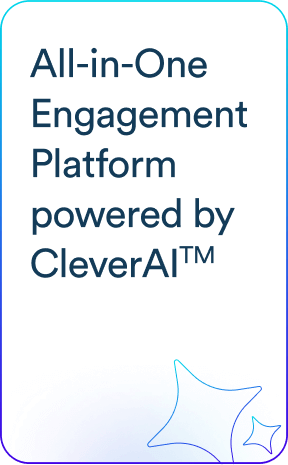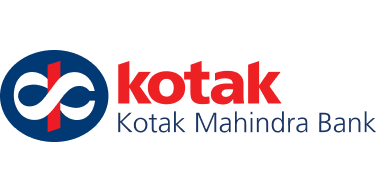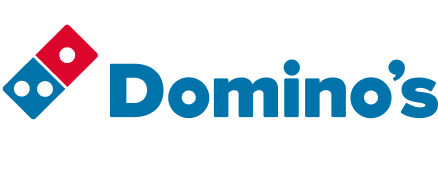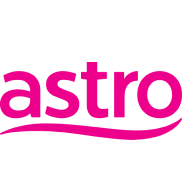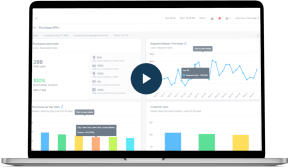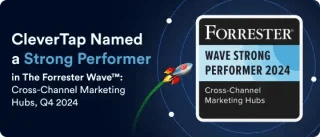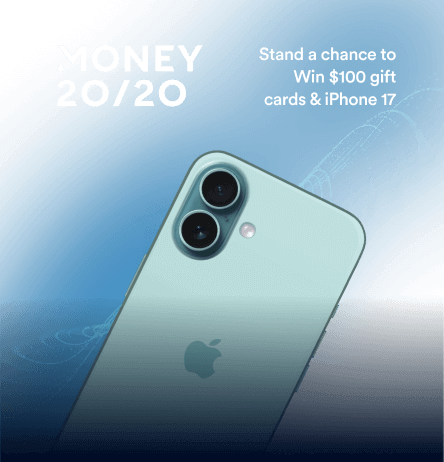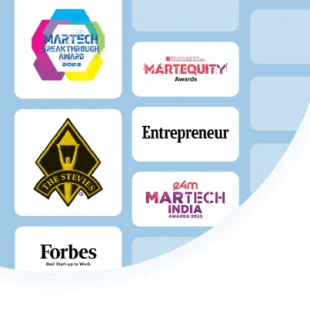Just a few years ago, marketing automation meant scheduling email blasts or setting simple, rule-based workflows in motion. It saved time, reduced manual effort, and improved consistency. But today, that’s no longer enough. Customers expect real-time relevance, hyper-personalized experiences, and interactions that feel intuitive, regardless of where or when they occur.
To meet these rising expectations, marketers are now turning to artificial intelligence (AI) to move beyond static automation. AI for marketing automation doesn’t just help you “set and forget” a campaign. It predicts behavior, adapts in real time, and makes intelligent decisions that drive conversions, retention, and customer lifetime value.
For example, instead of sending the same reminder to all cart abandoners after 24 hours, AI can decide whether to message instantly, delay until peak engagement time, or skip the nudge entirely based on a user’s purchase likelihood. Instead of manually updating audience segments every week, AI continuously clusters users based on their evolving behavior and intent. And instead of marketers relying on post-campaign reports to optimize, AI surfaces insights and executes improvements mid-flight.
This guide covers how AI is shifting marketing automation from static to predictive, with real-world use cases, implementation steps, and key machine learning techniques. Whether you’re starting out or scaling up, it’ll help you apply AI to drive smarter, faster growth.
Understanding AI In Marketing Automation
Marketing automation has long helped teams streamline repetitive tasks, like sending welcome emails, scheduling push notifications, or segmenting users by location or device. These traditional systems follow predefined rules: “If user does X, then do Y.” While effective for simple workflows, this logic breaks down when customer behavior gets complex, dynamic, or unpredictable.
That’s where artificial intelligence steps in.
AI in marketing automation refers to the use of machine learning models, algorithms, and behavioral data to make real-time, context-aware decisions, without needing a marketer to manually define every possible trigger or path. Rather than relying on static journeys, AI-powered automation continuously learns, adapts, and improves outcomes based on user interactions.
Here’s how AI changes the game:
- From Rules to Predictions: Instead of setting up dozens of “if-this-then-that” flows, AI can predict which users are most likely to convert, churn, or re-engage—and trigger personalized actions accordingly.
- From Static Segments to Dynamic Clustering: Traditional customer segmentation is fixed and often outdated by the time it’s deployed. AI constantly analyzes user behavior, purchase patterns, and engagement signals to group audiences that actually reflect real-time intent.
- From Scheduled Blasts to Contextual Timing: AI analyzes when each user is most likely to engage and automatically adjusts send times to maximize open rates and clicks, something rule-based tools can’t manage at scale.
In essence, AI enhances automation by replacing rigid logic with adaptive intelligence. It turns marketing systems from execution engines into decision-making assistants that operate with greater speed, precision, and personalization.
For marketers, this means less time spent configuring workflows and more time focusing on creative strategy, content, and experimentation.
Why More Marketers Are Relying on AI
AI is fundamentally reshaping how marketers engage, convert, and retain customers. What sets it apart is its ability to process massive volumes of behavioral data, spot patterns invisible to humans, and act on those insights in real time. Whether your goal is to boost conversion rates, improve campaign efficiency, or deliver more personalized experiences at scale, AI enables both speed and intelligence.
Here’s why more marketers are embedding AI into their workflows:
It’s More Personal (in a Good Way): AI helps marketers speak to individuals, not audience segments. Consider a shopper who adds a product to their cart but doesn’t check out. A rule-based system might send a generic reminder 24 hours later. AI, on the other hand, can assess purchase likelihood, previous behavior, and timing preferences and then send a custom message that includes a tailored offer, urgency cue, or even product alternatives.
This isn’t about just knowing someone’s name. It’s about delivering relevance at the micro-moment level, which leads to higher engagement, lower churn, and stronger LTV.
It Knows When to Speak Up: Timing is everything in customer engagement, and AI helps you get it right. By analyzing when each user typically engages (opens, clicks, buys), AI can automatically schedule outreach at the optimal time for each individual. This increases the chance your message is seen, rather than ignored or deleted.
For example, if User A tends to check emails at 9 a.m. while User B prefers browsing apps at 10 p.m., AI adjusts delivery accordingly, at scale, without manual configuration.
It Segments Smarter, Not Harder: Manually creating audience segments can be tedious and often misses key behavioral nuances. AI uses clustering algorithms to analyze activity patterns, recency-frequency-value (RFV) metrics, product affinities, and engagement signals to build smarter, dynamic segments.
Instead of grouping users by age or geography, you can target cohorts like “high-intent window shoppers,” “new users likely to churn,” or “repeat buyers responding to discount fatigue.” These AI-driven segments update automatically as user behavior evolves.
Learn how to conduct cohort analysis in our comprehensive guide.
It Makes Budgets Work Harder: AI improves marketing efficiency by making every campaign dollar go further. It helps you identify which channels drive the highest ROI for each segment, optimize bid strategies in real time, and reduce waste from poorly targeted ads.
McKinsey reports that companies using AI in marketing can achieve up to a 30% increase in ROI. This isn’t just about cutting costs, it’s about driving better outcomes with the same or fewer resources.
It Cuts the Lag Between Data and Action: Most marketers are used to running a campaign, waiting for reports, analyzing performance, and then making changes. AI eliminates this lag by learning from live data and adjusting strategies on the fly.
For example, if a message variant is underperforming, AI can deprioritize it in real time. If a push notification gets unusually high clicks in a certain region, the system can increase its distribution automatically. This level of agility ensures campaigns stay optimized without constant human intervention.
The Uptick in Adoption: This shift isn’t theoretical anymore. It’s well underway. According to MarTech, 94% of organizations now rely on AI to plan or execute marketing activities, and 69% of marketers had already integrated AI into their operations by 2024. AI is no longer a futuristic differentiator. It’s fast becoming the new baseline for high-performing, customer-centric marketing teams.
You might like to read: An effective mobile marketing automation guide for marketers.
Ways To Implement AI-Driven Marketing Automation
AI-powered marketing automation isn’t something you can just switch on and expect results overnight. It requires careful planning, the right tools, and a data foundation that supports intelligent decision-making. Most importantly, it needs a mindset shift, from setting up workflows manually to letting algorithms guide engagement.
While implementation paths vary depending on your organization’s maturity, industry, and goals, the steps below represent a proven roadmap to get started and scale effectively.
Step 1: Set A Clear Objective
Every successful AI implementation starts with a well-defined business goal. Without clarity, it’s easy to get distracted by shiny AI features that don’t move the needle.
Ask:
- Are you trying to reduce cart abandonment among first-time users?
- Do you want to increase repeat purchases during seasonal sales?
- Is your churn rate rising in a specific high-value segment?
Specific objectives allow you to:
- Choose the right AI features (e.g., predictive churn vs. product recommendations)
- Focus data collection on relevant behaviors and signals
- Define KPIs that tie AI output to measurable business outcomes (e.g., uplift in conversion rate, reduced time-to-purchase, higher ARPU)
Pro tip: Document these objectives and use them to guide vendor evaluations and success benchmarks later.
Step 2: Connect Data Sources
AI is only as good as the data it learns from. That means your first technical step is data unification, pulling together insights from every customer touchpoint:
- Digital: app, website, email, CRM, customer support chats
- Offline: retail stores, call centers, kiosks, POS systems
To make this seamless, most teams rely on a Customer Data Platform (CDP) that ingests behavioral, transactional, and demographic data to create unified, real-time user profiles.
Why it matters:
- A user who browses in-app but purchases in-store should still receive relevant online nudges.
- AI models need cross-channel visibility to recommend the right action at the right time.
Watch out for: Silos in your data stack. If mobile, web, and offline data live in separate tools, AI decisions will be fragmented or misinformed.
Step 3: Choose The Right Tools
Not all marketing automation tools are built for AI-first operations. Many legacy platforms offer basic triggers but lack intelligence.
When evaluating platforms, look for:
- Real-time behavioral segmentation (not static lists)
- Predictive analytics (churn, conversion, product interest scoring)
- Journey orchestration (automated decision making across multiple channels)
- Experimentation and optimization engines (A/B testing, multivariate testing, auto-adjusting journeys)
Platforms like CleverTap, for example, integrate AI into customer segmentation, delivery, and journey design, reducing manual effort while improving performance.
Checklist:
- Can the tool respond to user behavior in real time?
- Does it support multi-channel engagement out of the box (email, push, SMS, WhatsApp)?
- Can non-technical users build and test AI-powered journeys easily?
Step 4: Build Scalable Workflows
Start small, with one or two high-impact use cases, and scale as you gain confidence. Focus first on journeys that drive measurable outcomes and benefit from real-time personalization.
Examples:
- Abandoned cart recovery: AI can tailor nudges based on cart value, product category, or likelihood to purchase.
- Onboarding flows: Personalize based on acquisition source, device type, or first-session behavior.
- Re-engagement campaigns: Target users showing signs of churn (e.g., drop in session frequency or in-app activity).
Once these workflows are live and tested, expand into multichannel campaigns that span push, email, in-app, SMS, and even offline touchpoints.
Framework: Use the RFM model (Recency, Frequency, Monetary) to prioritize audience segments for automated journeys.
Step 5: Monitor, Learn, And Iterate
AI doesn’t eliminate the need for human oversight. It amplifies your ability to learn fast and adapt faster.
What to monitor:
- Engagement metrics: opens, clicks, session duration, conversions
- Retention metrics: D7/D30 retention, churn rates by segment
- Revenue metrics: Average order value, customer lifetime value, upsell conversions
Use A/B testing and control groups to isolate the lift AI brings over rule-based workflows. Track not only campaign-level performance, but also journey-level KPIs (e.g., drop-off rates, conversion bottlenecks).
Most importantly, act on feedback:
- If churn-prediction accuracy drops, retrain models with newer data
- If engagement declines, test new variants or delivery timings
- If open rates flatten, evaluate message fatigue or channel misalignment
Reminder: AI requires feedback loops. The more you monitor and optimize, the more value the system delivers over time.
How To Use Machine Learning Algorithms For Marketing Automation
As marketing teams increasingly rely on AI to drive automation, it is helpful to understand the core machine learning (ML) techniques powering these systems. You don’t need to build algorithms from scratch, but a foundational grasp of how they work can help you better interpret insights, set expectations, and align strategies with business outcomes.
Machine learning enables systems to improve performance over time by learning from data, rather than following hardcoded instructions. When embedded into marketing platforms, these algorithms continuously analyze user signals to make automated decisions, such as when to send a message, what content to serve, or how to prioritize campaign variants.
Here are the main types of algorithms that underpin modern AI-driven marketing systems:
1. Recommendation Engines: These algorithms analyze patterns in user behavior and preferences to predict what an individual is most likely to engage with next. They typically rely on techniques like collaborative filtering or content-based filtering to surface the most relevant items from a large set of possibilities.
From a marketing automation perspective, recommendation engines increase the contextual relevance of campaigns by tailoring each interaction based on real-time behavioral data. This not only improves engagement rates but also helps scale personalization without requiring manual rule-setting.
2. Classification Models: Classification is a supervised learning approach where the system is trained on historical data with labeled outcomes. Once trained, it can classify new inputs into predefined categories. For example, determining whether a user falls into a “likely to churn” group or a “likely to convert” group.
Marketers benefit from classification models by being able to prioritize actions and resources. These models help automation systems make split-second decisions that align with conversion or retention goals, allowing for proactive engagement rather than reactive responses.
3. Clustering Algorithms: Unlike classification, clustering is an unsupervised learning method. It groups data points, such as users, based on natural similarities, without prior labeling. The goal is to discover hidden patterns and relationships in user behavior or profiles that might not be obvious through rule-based segmentation.
In marketing automation, clustering allows systems to dynamically identify and target micro-segments with similar behavioral tendencies. These segments are fluid and update continuously as new data comes in, enabling more precise targeting and efficient resource allocation.
4. Natural Language Processing (NLP): NLP allows machines to understand, interpret, and generate human language. In the context of marketing automation, NLP is used to process unstructured text data, such as user queries, reviews, or chat transcripts, and extract intent, emotion, or meaning.
This helps marketers scale communication across channels without compromising quality. More importantly, it allows automation systems to personalize messaging tone, content, and timing based on how users express themselves, leading to more human-like interactions at scale.
5. Reinforcement Learning: This is a more advanced ML technique where the algorithm learns through trial and error. It continuously evaluates different decisions and adapts based on the feedback received (e.g., clicks, conversions, drop-offs), seeking to maximize long-term outcomes rather than immediate wins.
In marketing automation, reinforcement learning empowers systems to self-optimize. Over time, the algorithm refines its approach by learning which sequences, channels, or offers yield the best results, not just for individual users, but across entire segments or journeys. This leads to compounding performance gains with minimal human adjustment.
Example:
A subscription app uses a classification model to identify users likely to cancel, based on declining activity patterns. Once flagged, the system triggers a retention flow.
A reinforcement learning model tests different offers (e.g., discount, bonus feature) and automatically prioritizes the best-performing variant for similar users going forward.
If the user engages, a recommendation engine suggests relevant content to maintain interest and prevent further drop-off.
Meanwhile, NLP monitors in-app messages or support chats to detect negative sentiment, feeding that back into the system to refine targeting and intervention strategies.
Together, these models enable a self-optimizing, personalized experience with minimal manual input, boosting retention while reducing operational overhead.
How Different Industries Are Putting AI to Work
AI-powered marketing automation isn’t tied to any one industry. In fact, its strength lies in how easily it adapts to different business models, customer needs, and engagement goals. Here’s how a few sectors are using AI to connect more effectively with their audiences:
E-commerce
For online retailers, AI is helping take the guesswork out of personalization. It can track what shoppers browse, what they leave behind in their carts, and what they’ve purchased in the past. From there, it recommends products that actually match their preferences, not just bestsellers or generic options. Some brands also use AI to offer timely discounts based on cart value or apply dynamic pricing that reflects real-time demand, boosting both conversion rates and margins.
Banking and Fintech
In finance, trust and timing are everything. AI helps banks and fintech firms spot unusual activity quickly, reducing the risk of fraud. It also supports personalized product suggestions, like recommending a new credit card or savings plan based on someone’s transaction patterns. And when customers start showing signs that they might leave, like a drop in app usage, AI helps teams step in early with retention strategies.
Subscription Services
Streaming platforms, learning apps, and other subscription-based businesses use AI to stay a step ahead of user behavior. It can surface content suggestions based on what someone’s watched or read recently, or send a reminder when they miss a few sessions. If a user looks like they might cancel, AI can trigger a retention campaign or offer an incentive to stick around. These touches can go a long way in reducing churn.
Gaming
In gaming, AI is the secret sauce behind tailored experiences. It learns how each player interacts with the game and uses that data to serve up personalized rewards, challenges, or content. If a player hasn’t logged in for a while, AI can send a well-timed push with something they’re likely to enjoy based on past behavior. This kind of contextual engagement keeps players active and invested.
Real-World Example: How Lenskart Uses AI-Powered Automation
Lenskart, India’s leading eyewear brand, faced a complex challenge: how to unify online and offline customer data from 500+ stores and a massive app user base. The company wanted to deliver seamless experiences across its web, app, and retail channels.
With CleverTap, Lenskart implemented AI-powered marketing automation that unified data from multiple sources. Using automated segmentation based on recency, frequency, and monetary (RFM) analysis, Lenskart built campaigns based on real-time user behavior.
Results:
- 68% Higher Engagement with push notifications personalized by name, location, and purchase history
- 75% More Efficient Campaigns through actionable analytics and faster delivery
- Unified Customer Profiles by merging app, web, and in-store purchase data
Make Marketing Automation Work Harder (and Smarter) with CleverTap
CleverTap simplifies and amplifies marketing automation by combining real-time user insights, intelligent decision-making, and multichannel execution, all in one platform. Instead of relying on one-size-fits-all messages or fragmented journeys, you can design adaptive campaigns that respond to what each user does (or doesn’t do) across channels.
Intelligent Journey Orchestration with Clever.AI
At the core of this system is Clever.AI, an intelligence engine that continuously learns from user behavior and predicts likely outcomes. That means your campaigns aren’t just reactive; they’re proactive. If a user shows signs of churn, the system can intervene early to prevent it. If someone is browsing with high intent, it can trigger the next-best action before the moment is lost.
Using Journey Builder, you can create flexible, real-time workflows that adapt at each step:
- If a user skips onboarding, you might start with a push notification.
- No response? The journey pivots—maybe to WhatsApp the next day.
- Still inactive? An email follow-up is triggered.
Every interaction is guided by live behavior and contextual signals, not static rules. This agility helps increase conversion while minimizing user fatigue.
Real-Time Segmentation and User Insights
Because all customer data, across app, web, and offline touchpoints, lives within the platform, segmentation becomes a dynamic capability. You can identify users who, for instance:
- Browsed a specific feature but didn’t activate it
- Purchased last month but haven’t launched the app since
- Responded to a recent offer but dropped off before conversion
You don’t need engineering support to activate these insights. Segments update in real time, and campaigns can be launched with just a few clicks.
Continuous Optimization and Experimentation
CleverTap also enables continuous optimization. You can:
- Run A/B tests and multivariate experiments across touchpoints
- Set intelligent delivery rules based on time, location, or behavior
- Let the system auto-adjust toward the most effective variant based on performance data
Built to Scale: TesseractDB™ and Long-Term Personalization
To support deep personalization at scale, CleverTap is powered by TesseractDB™, a proprietary data engine that stores unlimited user behavior data for up to 10 years. This ensures your segmentation and targeting always reflect long-term user value, not just recent activity.
Omnichannel Engagement with Specialized Tools
CleverTap’s multichannel engagement suite includes:
- Push Notifications powered by RenderMax™ for guaranteed delivery at scale
- WhatsApp, Email, SMS, Web Messaging, and more, fully orchestrated across journeys
Advanced Segmentation and Lifecycle Mapping
Its advanced segmentation tools include:
- RFM modeling
- Intent-based clustering
- Lifecycle mapping
These enable precision targeting without manual work or static audience lists.
Proven Results and Business Impact
Clever.AI works in the background to maximize impact and efficiency. In fact, a commissioned study conducted by Forrester found that brands using the platform achieved:
- 50% higher click-through rates
- 35% increase in conversion rates
- 561% ROI over a 3-year period
Discover how CleverTap uses AI to personalize journeys in real time, at scale.
What’s Ahead for AI in Marketing Automation
AI has moved from a “nice-to-have” to the backbone of modern marketing. As campaigns grow more complex and customer expectations rise, AI is powering the shift toward faster, smarter, and more relevant engagement.
One of the most transformative developments is Generative AI. It enables teams to quickly produce subject lines, ad creatives, images, and even full campaigns. This frees up time to experiment and optimize across channels.
Conversational AI is also advancing fast. Modern systems now understand context, respond naturally, and support everything from product discovery to onboarding, offering 24/7 assistance without overburdening human teams.
Meanwhile, privacy-safe personalization is gaining traction. With stricter data regulations and growing user awareness, technologies like federated learning and edge computing allow brands to deliver tailored experiences without compromising data security.
Perhaps the most exciting evolution is the rise of autonomous campaigns. These systems don’t just recommend, they execute. From budget allocation to message optimization, AI can now manage entire marketing journeys in real time, reducing manual oversight while boosting performance.
With rising acquisition costs and shrinking loyalty, marketers can no longer rely on static workflows. Shifting to AI-driven strategies now is key to staying competitive in a landscape where speed, personalization, and intelligence define success.
Ready To Turn AI Into Growth?
The most agile marketing teams today are leaning on AI to make faster decisions, tailor experiences at scale, and unlock higher ROI, without increasing workload.
CleverTap brings this edge to your automation stack through Clever.AI, turning behavioral insights into timely actions that move the metrics that matter.
If precision, adaptability, and real-time optimization are priorities for your team, it’s time to see what intelligent automation can do. Request a demo and explore how CleverTap helps you engage smarter, at every step.
Agnishwar Banerjee 
Leads content and digital marketing.Expert in SaaS sales, marketing and GTM strategies.
Free Customer Engagement Guides
Join our newsletter for actionable tips and proven strategies to grow your business and engage your customers.

